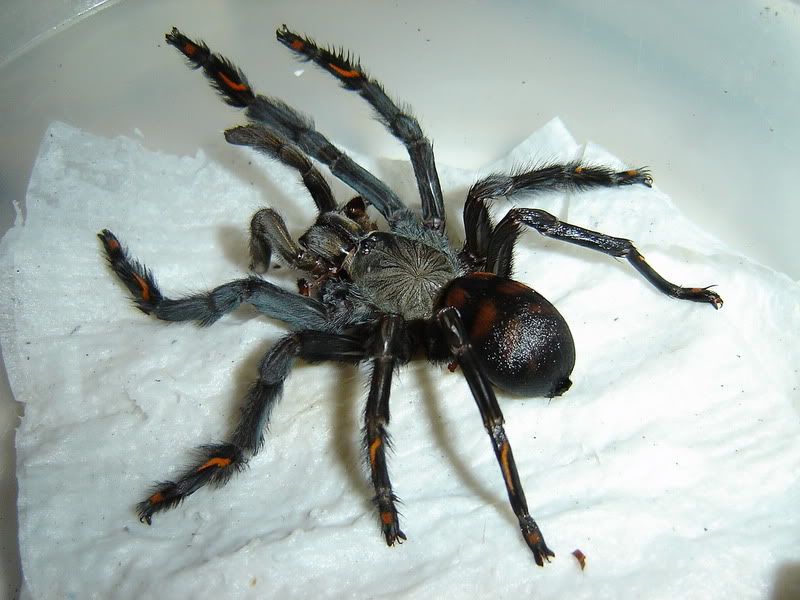This is kinda for own personal info... It interests me and if i can find anything out about it, i may, one day write something on it....
A friend of mine's spider died after a moult, and some people suggested a wet moult. So i didnt know what one was. I'd neither heard of nor seen one before.
Then today, while searching a forum i regularly go on i saw this...

This P. irminia did not survive...
So i gathered, seeing as her abdomen and back 4 legs are wet...that this is a wet moult...
After talking to the owner of this spider, the whole spider is moulted (Although it looks as if the back end has, and the front hasn't) and the chelicerae are stuck.
So i am asking some questions.
What exactly is a wet moult?
What causes it?
Can anything be done to save the spider once it is noticeably "wet"?
If this spider did not die of a wet moult, then what was wrong with this moult? As it is clearly not normal.
Did she die because her chelicerae got stuck? Or was it the moult...?
Any help or experience, or just general views/hypothesis of this is greatly appreciated.
(Picture courtesy of regalis, arachnofreaks.com)
A friend of mine's spider died after a moult, and some people suggested a wet moult. So i didnt know what one was. I'd neither heard of nor seen one before.
Then today, while searching a forum i regularly go on i saw this...

This P. irminia did not survive...
So i gathered, seeing as her abdomen and back 4 legs are wet...that this is a wet moult...
After talking to the owner of this spider, the whole spider is moulted (Although it looks as if the back end has, and the front hasn't) and the chelicerae are stuck.
So i am asking some questions.
What exactly is a wet moult?
What causes it?
Can anything be done to save the spider once it is noticeably "wet"?
If this spider did not die of a wet moult, then what was wrong with this moult? As it is clearly not normal.
Did she die because her chelicerae got stuck? Or was it the moult...?
Any help or experience, or just general views/hypothesis of this is greatly appreciated.
(Picture courtesy of regalis, arachnofreaks.com)
